
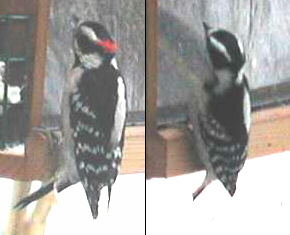
Winter Birdfeeding
In this at-home lab, you are asked to observe the local birds which visit a birdfeeder which you are asked to set up, to learn the names of these birds, to learn to recognize/identify them by signt, to observe how the bird population changes as spring approaches, and to observe behavioral characteristics of the various species of birds that visit the feeder and the interactions among the birds.
Dr. Fankhauser’s Bird List and Photographs:
Dr. Fankhauser has compiled the following list of birds likely to be found at feeders in the Cincinnati area during the winter months. He has also photographed many of these birds so where available, his photos are included, here.
Family Columbidae
Family Picidae


Family Corvidae

Family Paridae
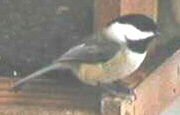

Family Sittidae

Family Troglodytidae
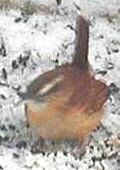
Family Turdidae

Family Sturnidae

Family Passeridae
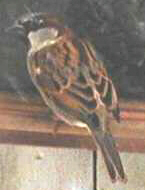
Family Icteridae
Family Fringillidae






* = unusual, ** = rare
Other Background Information:
Feeding and observing birds is an enjoyable hobby for many people, especially in the winter. It is a good way to familiarize oneself with the local bird population and with how that population changes as spring approaches and migrants pass through or return from their overwintering sites. Additionally, there may be “local” birds that are only here for the winter, traveling further north in the spring.
As one becomes familiar with the various birds, it will become apparent that some birds prefer certain of the seeds which they are offered. Actually, an experiment could be set up to test this by offering various kinds of seeds sorted out into individual piles or trays. Some birds will not be attracted to seeds, but will come to get suet (while seeds may be fed in warmer weather, too, it is not advisable to do so with suet as it rapidly goes rancid if warm).
It should also, soon become apparent that certain birds are quite dominant when they show up at the feeder. When these birds show up, the rest fly off and either wait on the “sidelines” or quite some distance away. Certain other birds may be observed to physically chase others away. Since varying the type(s) of seeds offered makes the feeding station more or less attractive to various birds, it might be possible to exclude the more aggressive birds by not including seeds that they like.
The Ortho book, How to Attract Birds, listed in your syllabus may be available in garden supply and/or hardware stores. While it is not the only such book, it has some good suggestions on setting up bird feeders and ideas for other food items to try. There are other books available which deal with these topics, including publications put out by the Audubon Society. You may wish to examine such book(s) in a library and/or purchase it/them for yourself.
Birdfeeding/watching is a hobby that can be shared with children either at home or in a school setting.
Gather Supplies and Pick a Location:
You will need a birdfeeder. Any kind of weatherproof container
will work —
either purchased or homemade. Many garden supply and hardware stores as
well as the Cincinnati Nature Center carry birdfeeders of various designs if
you wish to purchase one. Some of these are meant for certain types of
seed (for example, thistle) or for other food items (for example, a nectar
feeder for hummingbirds during the summer months). You do not need to
purchase one of these, however, to enjoy feeding birds in your yard, as a
number of publications are available on building birdfeeders.
 When I was a
child, my father constructed a birdfeeder from a corrugated cardboard box by
cutting out two or three of the sides while leaving the top, bottom, and
edges. While this type of feeder can withstand freezing weather and snow,
it will rapidly get soggy in wet weather. Note that it is helpful to leave
an edge around the bottom to keep seed in the feeder.
When I was a
child, my father constructed a birdfeeder from a corrugated cardboard box by
cutting out two or three of the sides while leaving the top, bottom, and
edges. While this type of feeder can withstand freezing weather and snow,
it will rapidly get soggy in wet weather. Note that it is helpful to leave
an edge around the bottom to keep seed in the feeder.
 Having a top on the
feeder is useful for keeping snow out of the seed, thus making it more
attractive to the birds. Even this is not absolutely necessary, however:
when I lived in an apartment with a small balcony and regulations concerning
what could/could not be visible, I just spread seed out on the balcony. I
have also known people who threw seed on/under their picnic table in winter.
People have even made a birdfeeder out of an empty soft-drink bottle or milk
carton. Birds will readily use any available food once they discover it.
Having a top on the
feeder is useful for keeping snow out of the seed, thus making it more
attractive to the birds. Even this is not absolutely necessary, however:
when I lived in an apartment with a small balcony and regulations concerning
what could/could not be visible, I just spread seed out on the balcony. I
have also known people who threw seed on/under their picnic table in winter.
People have even made a birdfeeder out of an empty soft-drink bottle or milk
carton. Birds will readily use any available food once they discover it.
 You will need food for the birds. While the
commonly available “wild bird mix” of seeds will be consumed, you may wish to
experiment with other seeds or seed mixes. In the premixed seeds, you may
notice that the sunflower seeds are eaten first, even if it means scratching
all the other seeds out on the ground to get to them. Because of this,
many people purchase extra sunflower seeds and mix them in (Dr. Fankhauser
suggests that a 50:50 mixture of “bird seed” and sunflower seed works well).
A thistle feeder, either purchased or homemade, is an option to attract some
of the smaller birds like house finches and goldfinches.
You will need food for the birds. While the
commonly available “wild bird mix” of seeds will be consumed, you may wish to
experiment with other seeds or seed mixes. In the premixed seeds, you may
notice that the sunflower seeds are eaten first, even if it means scratching
all the other seeds out on the ground to get to them. Because of this,
many people purchase extra sunflower seeds and mix them in (Dr. Fankhauser
suggests that a 50:50 mixture of “bird seed” and sunflower seed works well).
A thistle feeder, either purchased or homemade, is an option to attract some
of the smaller birds like house finches and goldfinches.
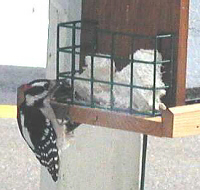 A thistle
feeder can be inexpensively made by filling the end of an old stocking with
seed, then piercing the stocking with a knife to make holes large enough for
the birds to remove the seeds. Many insect-eaters will come to suet
in the winter — just be sure to put it into some kind of mesh (hardware
cloth or onion or turkey bag) so the whole piece is not removed at once. If
you wish to feed peanut butter, it is better that you not put out a big glob
of it — birds can choke on it like people. Rather, spread it in/onto a
pinecone, making it available in small, bite-sized pieces. Fruit chunks
such as apple or orange halves or a banana can be securely anchored to the
feeding station such that the birds can pick at them without carrying them
off. Whole-grain breads and/or noodles, popcorn, cooked dried beans, etc.,
may also be offered.
A thistle
feeder can be inexpensively made by filling the end of an old stocking with
seed, then piercing the stocking with a knife to make holes large enough for
the birds to remove the seeds. Many insect-eaters will come to suet
in the winter — just be sure to put it into some kind of mesh (hardware
cloth or onion or turkey bag) so the whole piece is not removed at once. If
you wish to feed peanut butter, it is better that you not put out a big glob
of it — birds can choke on it like people. Rather, spread it in/onto a
pinecone, making it available in small, bite-sized pieces. Fruit chunks
such as apple or orange halves or a banana can be securely anchored to the
feeding station such that the birds can pick at them without carrying them
off. Whole-grain breads and/or noodles, popcorn, cooked dried beans, etc.,
may also be offered.
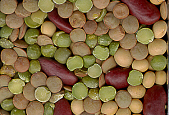 |
 |
 |
||
 |
 |
 |
 You will need some kind of a field guide to identify your
visitors. Several options are listed in your syllabus, but you may have
another “favorite” that will work just as well. An optional pair of
binoculars
and/or a camera may come in handy, depending on how far away you
locate your feeder (you don’t need to go out and buy binoculars just
for this lab if you have no other use for them).
You will need some kind of a field guide to identify your
visitors. Several options are listed in your syllabus, but you may have
another “favorite” that will work just as well. An optional pair of
binoculars
and/or a camera may come in handy, depending on how far away you
locate your feeder (you don’t need to go out and buy binoculars just
for this lab if you have no other use for them).
Choose a location for your feeding station where it can be
seen without
going outside. Many people place feeders where they can be seen while
sitting at the kitchen or dining table or just outside of a sliding
glass door.
 A distance of 10 to 20 feet from the window works well,
depending on the location of an available tree or pole for mounting
it. Closer to a window could, optionally, work, too, and once the birds
figure out your cat is on the other side of a window and can’t pounce on
them, they’ll learn to ignore the cat sitting in the window watching
them. I remember seeing an advertizement for a feeding station that was
designed to fit into a window, like an air-conditioning unit “in reverse”:
it had a glass top and sides and was designed to fit into the window in such
a way that the feeding area was “inside” the room. That way, you could sit
in your easy chair and watch the birds next to you, but on the other side
of the glass.
A distance of 10 to 20 feet from the window works well,
depending on the location of an available tree or pole for mounting
it. Closer to a window could, optionally, work, too, and once the birds
figure out your cat is on the other side of a window and can’t pounce on
them, they’ll learn to ignore the cat sitting in the window watching
them. I remember seeing an advertizement for a feeding station that was
designed to fit into a window, like an air-conditioning unit “in reverse”:
it had a glass top and sides and was designed to fit into the window in such
a way that the feeding area was “inside” the room. That way, you could sit
in your easy chair and watch the birds next to you, but on the other side
of the glass.
Setting Up Your Birdfeeder:
Obtain all necessary supplies and set up your feeding station. It is important that you locate the station where it will be easily visible from a window of your house/apartment. Many people like to put a feeder where it will be visible from the kitchen or dining room table. The feeder should be high enough to keep local cats from preying on the birds and dogs from taking the suet, yet low enough to easily refill. A squirrel guard around the base is optional. Nearby shrubs, tree branches, or other perching sites will help to make the site more attractive to the birds.
In your lab notebook, record how you set up your feeding station. Did you purchase or make your feeder? How was it made? Did you draw up any blueprints, etc.? Draw and/or include a photo of your feeder. Where is your feeder located in relation to your house? Draw a map of your house/yard/apartment with locations of window and feeder indicated (remember, any good map also shows which way is north). Optionally, include a photo of your set-up. If you changed your set-up or experimented with a different kind of seed(s) or other food, write it down and describe what you did.
Check the seed (and/or other food) level daily and refill as needed. Feel free to, occasionally, “experiment” by trying different foods.
Make daily observations of the birds at your feeder. You are most likely to see a variety of birds just after sunrise and just before sunset (more in bad weather) but other times of day may work, too. Check the feeder at different times if possible, to see when the most birds are there, then try to check the feeder at that time. Identify these birds with the aid of a field guide and list them in your lab notebook. You may wish to also note the weather conditions for that day, then later, examine your data to see if there is a correlation between the weather and your visitors.
Take notes on what birds you saw, what they were doing, how they were interacting with any other birds present, what they were eating, etc., in your lab notebook. Depending on how large you write and the thoroughness of your daily notes, you will need to set aside approximately 12 to 15 pages in your lab notebook for these data and the discussion section. It is suggested that you set aside a separate page per week. On that page, you can, then, note each of the seven dates in that week and list all birds you saw at your feeder that day. You may wish to note any other birds you saw that day and where you saw them, especially if the birds in your yard haven’t found your feeder, yet. Thus, since the quarter is ten weeks long, if you can fit one week per page, this portion of the data will take approximately ten pages. However, if you take more notes, write larger, and/or include a lot of drawings and/or photos, a week’s-worth of data may take more than a page — that’s OK.
Take notes on any other observations. Do certain birds prefer certain foods? Do certain birds come at certain times of day? Are there some birds that scare or chase off the others? Do any of the birds have unusual or interesting habits or ways of getting at the food?
On the “Birds” page in the cumulative list section in the back of your notebook, include all the species of birds you have seen during the course of your observations. Remember to also include common and scientific names, family, date first seen, and a page reference to your viewing notes on that species.
Other Things to Include in Your Notebook
Make sure you have all of the following in your lab notebook: